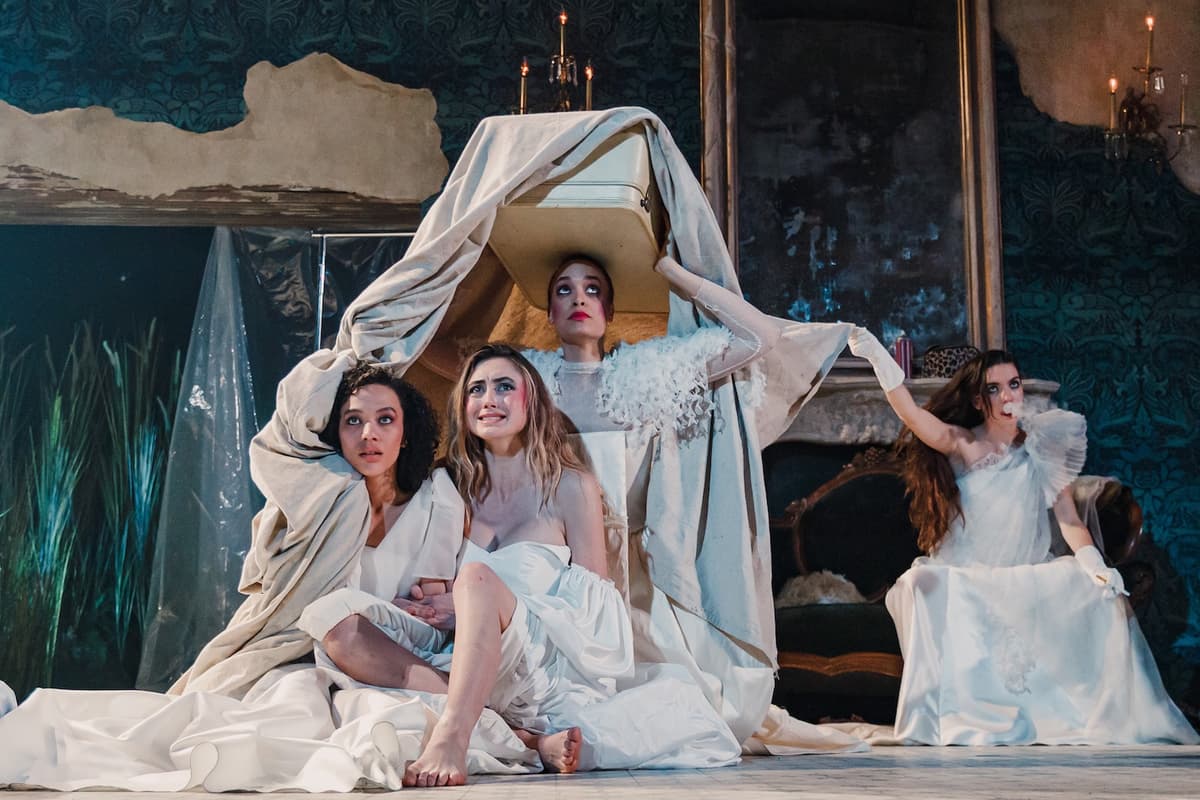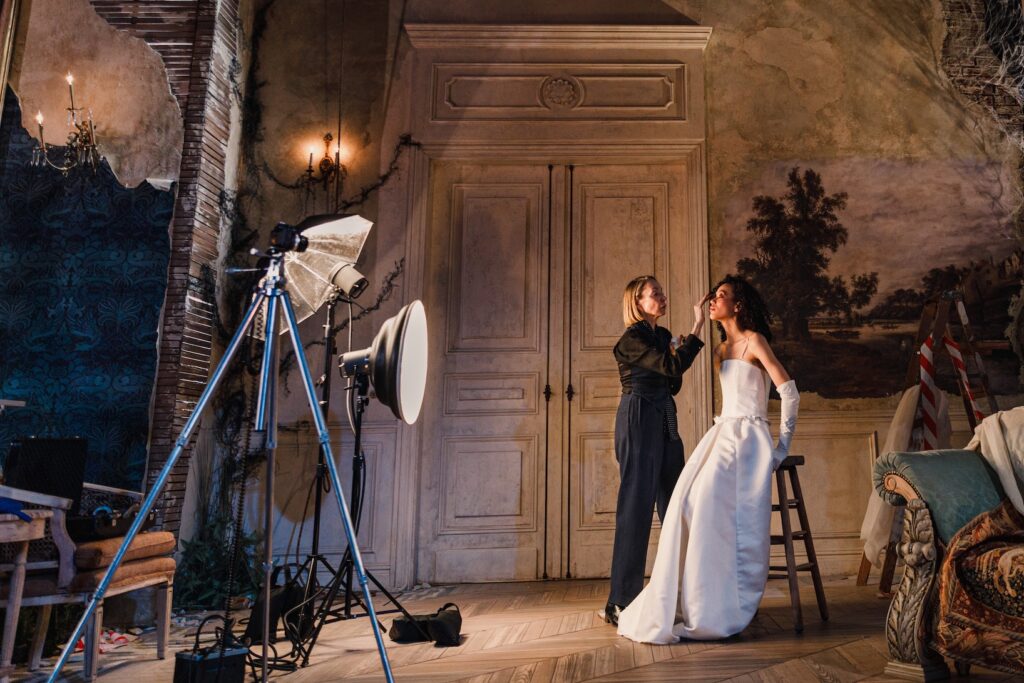Like a Certain Stereotype, ‘Five Models in Ruins, 1981’ Is Beautiful To Behold but Basically Vapid
While the one-act piece by Caitlin Saylor Stephens clocks in at just about 95 minutes, it will test the forbearance of audience members — not so much with monotony, but because its characters often are so irritating.

Many imagine that modeling shoots are glamorous, bringing together beautiful people, fabulous clothes, and exotic locations. Yet any professional could tell you they can also be long and tedious, littered with complications and inconveniences, challenging the patience of everyone involved.
“Five Models in Ruins, 1981,” a new play by Caitlin Saylor Stephens, makes this point rather too convincingly: While the one-act piece, now being presented by Lincoln Center Theater’s programming initiative devoted to developing new artists and audiences, LCT3, clocks in at just about 95 minutes, it will test the forbearance of audience members — not so much with monotony, but because its characters often are so irritating.
This is despite the presence of Elizabeth Marvel, a wonderful stage and screen actress, in a key role. Ms. Marvel plays Roberta, a veteran photographer tasked with shooting a group of models in an abandoned European estate, with no toilet onsite and bad weather predicted. It is, as the title indicates, the year of Prince Charles’s marriage to the young Diana Spencer, and the assignment — for Vogue magazine, where it’s being considered for a cover — enlists some of the exquisite designer gowns that Diana rejected for the occasion.
The costumes, by Vasilija Zivanic, are stunning, as are the actresses who wear them; in their cascading white dresses, they suggest tall, thin angels surrounding Roberta, who is decked out in basic black. Their characters’ behavior, alas, is anything but angelic; shrewish is the first word that came to mind during a recent preview, after about a half hour of watching them shout at and over each other.

The gorgeous harpies include the sharp-tongued, Soviet-bred Tatiana, played by a steely, witty Maia Novi. While already a fading star in her 20s, Tatiana is not going down easily: “I am fighter,” she declares at one point, threatening to slap someone else’s “pretty little famous face.” In another of the play’s funnier announcements, Tatiana informs Roberta that her time is limited: “I have abortion. Tuesday. Germany. They’re cheaper in Europe.”
Chrissy, the most in-demand model in the group, is a bulimic blonde who regales the others with a long list of notable men she has slept with, among them all the members of a certain popular band. Stella Everett gives her an airy superciliousness, while Britne Oldford is more aggressively grating as Alex, whose consuming jealousy makes her determined to get under Chrissy’s perfect skin.
Another woman stumbles in late, apparently an old colleague of Roberta; her name is Susan, and we know she’s British because of her accent and dry, breezy manner, well played by Madeline Wise, and her frequent use of the word “wanker.” Susan insists she didn’t oversleep, explaining that the previous night she “only had a couple drinks. Maybe a few pills. A little cocaine. And definitely a fish sandwich. So basically, I was completely sober.”
Only Grace, a teenager on her first professional shoot, played by a wide-eyed Sarah Marie Rodriguez, doesn’t seem preternaturally jaded. It’s through an earnest conversation she has with Roberta — juxtaposed with scenes of her fellow models barking at one another, and flashes of them posing and dancing to booming rock music, as they might at a fashion show — that Ms. Stephens haltingly introduces the notion that these women may have inner lives.
Roberta appears, at first blush, to be the most stable and substantial of the bunch. Having lived twice as long as anyone else in the play, she knows what she wants, at least artistically, and Ms. Marvel captures her no-nonsense manner with predictable ease, along with a sense of repressed pain and longing. The photographer speaks a great deal about light — the challenge of getting the right balance, the tricks she can play with it, the tricks it can play on her.
Morgan Green’s zealous direction and Cha See’s lighting, which at different points evokes electrical problems and a large storm, reinforce that all this chat is supposed to have some metaphorical value, but I’ll be darned if I know what it is. Roberta, as it turns out, has no particular wisdom to offer: It’s revealed that her personal life is as frustrating and unfulfilled as the others’ presumably are, in her case involving unrequited love for a person who has been using her, in various capacities, for years.
Are we supposed to feel pity for Roberta, or anger toward this unseen figure she has permitted to lead her on, even though she should — and does, plainly — know better? Are we meant to see the models as vapid vipers, or as victims of a culture that objectifies them? Or both? Regardless, Ms. Stephens, who identifies on her site as a “post-punk playwright,” isn’t issuing a message that seems either edgy or illuminating — or feminist, in any meaningful sense of that term.
A lot of names are dropped to establish the play’s era, from stars of the fashion world and pop music to Ronald Reagan and “that Parker-Bowles bitch,” as Grace refers to the woman who will become Charles’s second wife and queen. Whatever cultural authenticity and humor these references lend, “Five Models in Ruins, 1981” emerges as a stylish but hollow enterprise.

